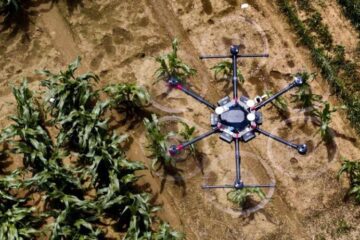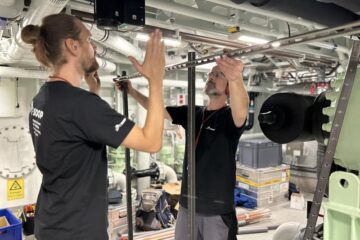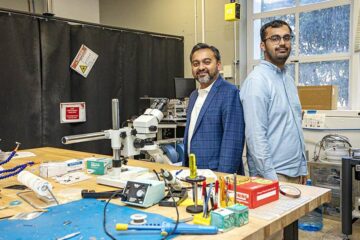NASA Sees Sixteenth South Pacific Cyclone Form

Tropical Cyclone 16S has already powered up into a tropical storm, and is headed in the direction of Port Louis and Reunion Island in the next couple of days.
At 10 a.m. ET (1500 UTC) on February 16, Tropical Storm 16S (TS 16S)) had maximum sustained winds near 52 mph (45 knots). It was about 575 nautical miles north-northeast of La Reunion Island, near 13.1 South and 60.6 East, so it has a good way to go before affecting the island. It was moving south at 9 mph (8 knots).
NASA’s Aqua satellite flew over Tropical Storm 16S on February 15 at 5:05 a.m. ET (1005 UTC) when it was still coming together and noticed that some strong convection was flaring up in its center. Convection is rapidly rising air that creates the thunderstorms that power tropical cyclones. Some of the thunderstorms in TS16S’s center at that time were already very strong, and very high, with cloud top temperatures colder than -63 degrees Fahrenheit!
This morning’s multispectral satellite imagery showed even deeper convection near the low level circulation center in addition to rain bands that are starting to wrap into TS 16’s center.
TS 16S is expected to intensify over the next two days on its southern journey because of low wind shear and warm waters in its path.
Residents of Port Louis, Reunion Island and Mauritius should watch local forecasts and monitor this storm.
Text credit: Rob Gutro, NASA/Goddard Space Flight Center
Media Contact
All latest news from the category: Earth Sciences
Earth Sciences (also referred to as Geosciences), which deals with basic issues surrounding our planet, plays a vital role in the area of energy and raw materials supply.
Earth Sciences comprises subjects such as geology, geography, geological informatics, paleontology, mineralogy, petrography, crystallography, geophysics, geodesy, glaciology, cartography, photogrammetry, meteorology and seismology, early-warning systems, earthquake research and polar research.
Newest articles

AI to Make Crop Production More Sustainable
Drones monitoring fields for weeds and robots targeting and treating crop diseases may sound like science fiction but is actually happening already, at least on some experimental farms. Researchers from…

Cruise Ship as Data Collector
New Approaches in Ocean Observation… Scientific research – not only confined to dedicated research vessels but also from non-scientific vessels and marine infrastructures. This is one of the ideas promoted…

Groundbreaking microcapacitors could power chips of the future
Scientists developed microcapacitors with ultrahigh energy and power density, paving the way for on-chip energy storage in electronic devices. In the ongoing quest to make electronic devices ever smaller and…





















